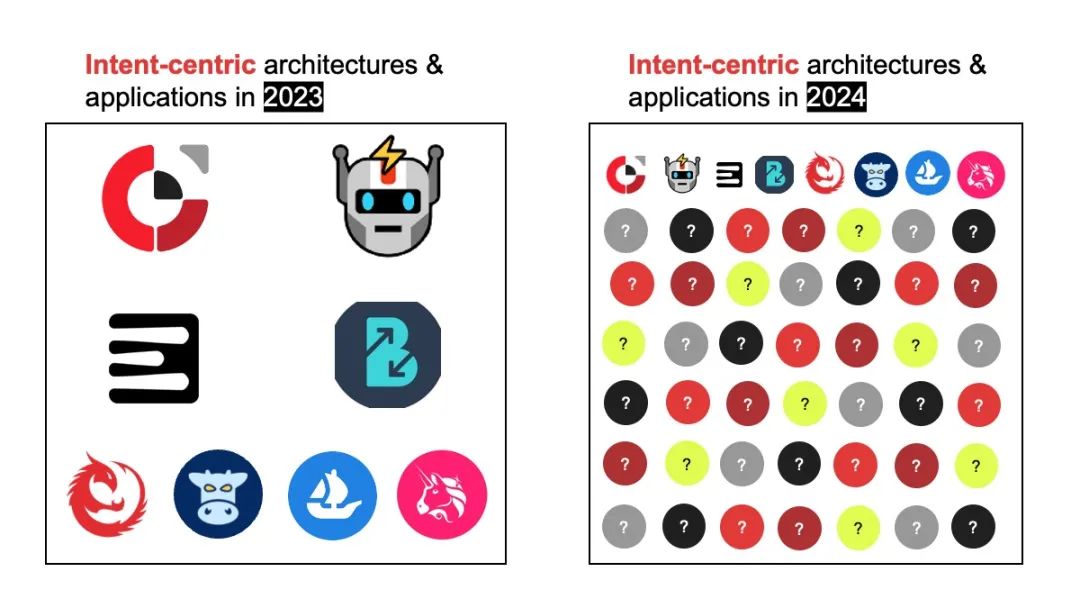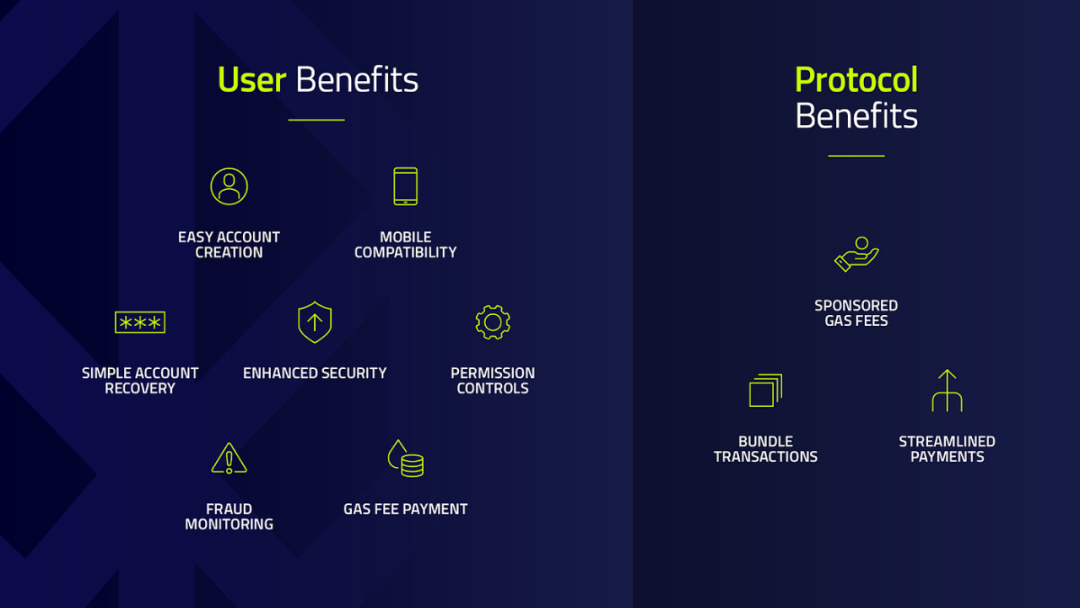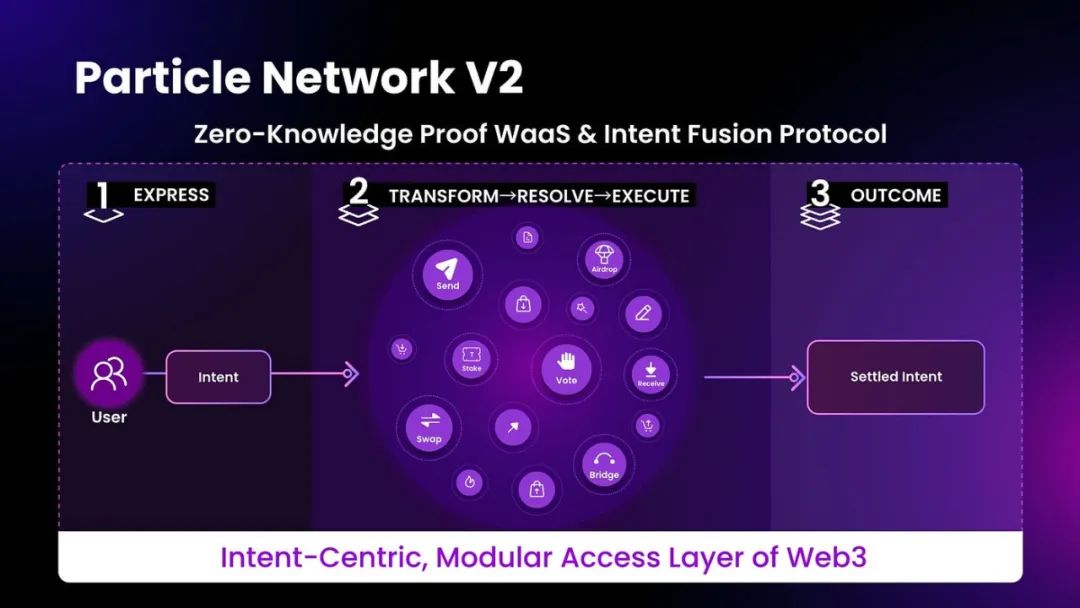
Author | Baize Research Institute
In the constantly evolving Web3 landscape, a new user interaction method is rapidly developing—Intent-Centric. Users can express their intentions/needs without losing autonomy and get results, with the complex paths and implementation processes handled by protocols/third-party solvers.
Just like when I want to buy a "Leading from Afar," I just need to fill in my name, address, and phone number in the online store, place the order, receive the delivery, and get the physical item without worrying about logistics. Or, it's like simply asking ChatGPT to "summarize the Ethereum whitepaper in 1000 words," and it can do it for you.

Intent-Centric greatly enhances the user experience, composability, and privacy of Web3.
From the user experience perspective, the essence of Intent-Centric is to simplify the user experience. By emphasizing "goals and results" rather than "process," users do not need to engage in complex interaction flows.
From the composability perspective, protocols tailored to user intentions are born, enabling maximum compatibility and nurturing a richer, more cohesive crypto ecosystem.
From the privacy perspective, expressing intent alone can avoid leaking detailed information or data about the user.
Just like the example of online shopping mentioned earlier, in Web2, we can experience various smooth operations and minimalist user experience designs. But in Web3, the high barrier to user experience has become one of the important reasons hindering the widespread adoption of Web3. Even the simplest swap may require cumbersome operations such as wallet creation and management, wallet connection, contract signing, and may also result in high slippage due to MEV, poor liquidity, and other factors.
Therefore, the emergence of Intent-Centric, which breaks down user needs and helps execute them, is by no means accidental. It continues to push the narrative of "widespread adoption of Web3" to new heights, along with Account Abstraction, TGBot, and MPC wallets, all of which aim to simplify the user experience.
Infrastructure Related to Intent
Account Abstraction
Account Abstraction is a popular concept that emphasizes users should use more specific smart accounts to do more specific things.

The finalization of ERC-4337's account abstraction has enabled smart accounts to have more login methods, social recovery capabilities, and reduced the barriers for new users to enter Web3 applications, allowing new users to enter applications where they can express their intent. In addition, the capabilities of bundled transactions and Gas payment by smart accounts can better achieve Intent-Centric. If authorization is required for every interaction, it will inevitably make the process of implementing user intent cumbersome and slow.
Therefore, smart accounts may become the true front-end entry point for Intent-Centric.
Leading wallet projects currently dedicated to implementing account abstraction include: Safe Wallet, Biconomy, ZeroDev, Argent, Ambire, Sequence, and others.
AI
Integrating AI similar to Siri and ChatGPT into wallets allows users to express their intent through AI conversations, which may be the ultimate form of Intent-Centric. Moreover, AI built on a large number of large language models is also the most effective tool for deciphering user intent. Only by deciphering user intent can third-party solvers execute more clearly. The award-winning project Bob the Solver at this year's ETHGlobal Paris hackathon is a good example. The veteran MPC wallet Particle Network is also working on similar projects.
Although the ideal is promising, there is still some way to go before it can be implemented.
At present, AI is difficult to achieve 100% accuracy in capturing user intent, and users find it difficult to express more complex intentions. For example, if I express the intent to AI: "Mint an NFT in the XX NFT series based on the average price, but my account balance must not be less than $5."
This sentence contains explicit and implicit intent.
The explicit intent is "mint an NFT, and my balance must not be less than $5," which clearly expresses my intent.
The implicit intent is "based on the average price," which only roughly describes the intent. Obviously, AI must also understand and analyze the following questions:
• What is the average price?
• Referring to which platforms?
MEV
MEV (Miner Extractable Value) is a long-term challenge for DeFi, as miners use their positions at the expense of ordinary users, often leading to unfavorable outcomes for users.
However, outsourcing the execution of user intent to solvers in Intent-Centric means that the MEV generated by transactions also needs to be closely monitored.
Currently, Essential and Flashbot SUAVE are both attempting to address this issue.
Intent-Centric Infrastructure
Juvix
Juvix is a programming language designed by the Intent-Centric public chain Anoma, allowing developers to easily implement application logic containing public, secret, and encrypted data.
Bob the Solver
The core of Bob the Solver is an AI solver and account abstraction wallet. The AI solver is equipped with machine learning models that can classify user intent. For example, if a user expresses the intent to purchase a specific NFT, the solver will accurately decipher the intent and find the best path to achieve the expected result. Subsequently, the solver will forward the intent and the best path to the account abstraction wallet, which will execute the transaction based on the best path.
OKcontract
OKcontract has created a "low-level intent" standard to simplify the difficulty for developers to integrate transactions into any webpage/application.
Delegatable
Delegatable is a tool and framework for implementing general delegation on Ethereum, allowing users to delegate friends/third-party agents to act on their behalf without paying gas fees or conducting transactions. Batch processing of transactions by agents can reduce gas fees and improve efficiency.
DApps for Specific Intent
It is worth noting that Intent-Centric did not emerge in Web3 only after Paradigm published its research article; on the contrary, protocols or features for executing user intent have existed for some time. In different verticals of Web3, there are already many protocols or features for specific user intent.
In the oldest DeFi field of Web3, user intent is usually oriented towards generating income and utility. Many DeFi DApps can be considered as precursors to the Intent-Centric narrative based on this intent.
For example, the well-known aggregators 1inch and Blur were created to help users avoid the hassle of finding the best trading path and profit strategy. Users only need to input their trading intent, and the smart contract will arrange the best route, leaving them to make the final decision.
Another example is the previously popular Unibot and other TGBots. They cleverly transform complex on-chain operations into decisions in Telegram chat options. Users can execute transactions, interact with airdrops, and snipe openings, which are relatively complex operations for new users, by selecting the corresponding options.
And for MEV, transaction slippage, and other issues, some new and old DeFi protocols are helping users with the "better trading" intent, such as,
• CoWSwap, 1inch Fusion, UniswapX: Off-chain matching, with solvers executing on-chain transactions, complex transactions do not require multiple gas payments, and there is no need to pay gas fees for failed transactions.
• Seaport: A fully decentralized alternative to Opensea, with off-chain matching and on-chain execution by solvers, users can place orders without gas fees.
• Symmio: A intent-based on-chain peer-to-peer derivatives trading platform. Users send transactions, and all other users can see the transaction information. If they accept the transaction, they become the counterparty/solver. There is no involvement of a liquidity pool, and what A earns is what B loses.
• BASED Markets: An on-chain trading platform based on the Symmio trading framework.
• BananaHq: Building smart wallets using Intent-Centric, ERC-4337, and zero-knowledge proofs to lower the barrier for new users to enter Web3.
General Solutions
The current blockchain-centric architecture represented by Ethereum provides a key attribute: programmable settlement, which is sufficient to support simple specific intent DApps but difficult to achieve complex intent. Some projects are creating general solutions for Intent-Centric, providing the necessary attributes for any specific intent DApp from the start.
Anoma
Anoma is an Intent-Centric + privacy-protecting public chain for counterparty discovery, parsing, and multi-chain atomic settlement. It is suitable for building DApps involving users issuing an infinite number of complex intents.
Anoma has raised a total of approximately $57.8 million, with a successful $26 million Series A funding round in November 2021, valuing the project at approximately $260 million. Although Anoma is still in the early stages, its whitepaper dates back to 2018 and, after years of incubation and evolution, it is in an absolute time and technological leadership position in the field of Intent-Centric.
The core technical components of Anoma include Taiga (a private state transition framework integrated into the intent propagation and matching layers), Typhon (a cross-chain atomic transaction consensus mechanism), MASP (multi-asset shielding pool), Vamp-IR (arithmetic circuit language), Juvix (programming language), and more. Built from the ground up for specific intent DApps, Anoma is indispensable for the implementation of Intent-Centric.
Essential
On September 21, Essential, which focuses on building a general solution for Intent-Centric, announced a $5.5 million seed round funding.
Essential's solution is mainly divided into three parts. Firstly, it creates a standard for users to express intent, providing a universal framework for expressing and resolving intent on any chain. Secondly, it is an Ethereum standard for intent-based account abstraction, allowing users to allow solvers to execute transactions to achieve their intent. Finally, it is a new Intent-Centric blockchain.
Compared to Anoma, Essential directly creates a new public chain. On the other hand, dappOS and Particle Network take a different approach, packaging existing DApps into the intent layer of Web3.
dappOS
In July 2023, dappOS completed a seed round funding led by IDG Capital and Sequoia China, following a previous seed funding from Binance Labs.
dappOS is the first Web3 operating protocol and an Intent-Centric protocol. By providing a multi-chain smart account (unified account) dappOS Account and a solver network dappOS Network, and integrating over 20 leading DApps, users can create and manage wallets, experience DApps on different chains, manage multi-chain assets, and conduct complex transactions as smoothly as using common apps.
For example, if Xiaoming's total balance in the dappOS unified account is 100 USDC, with 50 USDC on the Ethereum chain and 50 USDC on the BNB Chain, Xiaoming only needs to sign once to confirm the transaction to use the total balance of 100 USDC on GMX on Arbitrum or Benqi on Avalanche. This is where dappOS Account and dappOS Network come in handy, making it as convenient for users to use dappOS as using a CEX exchange, and all processes behind each transaction are executed by solvers.
With the launch of dappOS V2 in early September, it is no longer just a theoretical concept, with Perpetual Protocol being the first to integrate. More leading DApps will be integrated in the future, such as Perpetual, Benqi, QuickSwap, KyberSwap, GMX, KuSwap, Pangolin, and more. Thanks to dappOS, users can now settle gas fees using any token of their choice across various chains, including BNB Chain, which was previously only available on Arbitrum through Perpetual Protocol.
Particle Network
Particle Network officially launched its V1 product at the end of October last year, based on an MPC-TSS Wallet-as-a-Service product, and upgraded to an MPC+account abstraction wallet with the launch of ERC-4337. The highlight is the secure key fragment management and execution environment based on MPC, allowing users to log in in a familiar Web2 manner without worrying about the storage of private keys and mnemonic phrases. It also enhances the wallet experience based on account abstraction, such as unified gas fees and batch operations.
In the 10 months since the launch of V1, hundreds of DApps of all types have integrated Particle Network's products and services, including Xter.io, Hooked Protocol, ApeX, 1inch, and CyberConnect, covering the leading projects in various fields.
After the concept of Intent-Centric gained popularity, Particle Network "continues to work" and announced the upgrade to the new version V2. As it introduces itself, Particle Network V2 will be a Web3 access layer based on Intent-Centric.
Particle Network V2 is built on the existing MPC+ account abstraction wallet and the integration of hundreds of DApps, with the addition of a solver network and an AIGC in the wallet. Users only need to express their intent directly to this AIGC, and the solver will calculate the best path to execute based on the user's intent from the hundreds of DApps. Particle Network V2 is committed to realizing the ultimate form of Intent-Centric mentioned earlier.

In summary, dappOS is like the WeChat mini-program platform, abstracting the concept of public chains and interaction processes, allowing users to use dozens of DApps on different chains in a single wallet. Particle Network V2 is more like ChatGPT, where users only need to chat with AIGC, and AI will automatically help them complete complex transactions. Once the products are perfected, both will play a significant role in attracting new users to Web3. Anoma and Essential are more like iterating the current Web3, maximizing Intent-Centric. Although the road is long, once matured and the developer and user ecosystem is well established, it is expected to trigger a new round of explosive growth in DApps and usher in the next era of Web3.
Note:
The above projects and opinions should not be considered as investment advice. Do your own research. According to the notice issued by the central bank and other departments on "Further Preventing and Dealing with the Risks of Virtual Currency Trading Speculation," the content of this article is for information sharing only and does not promote or endorse any business or investment activities. Readers are strictly required to comply with local laws and regulations and not engage in any illegal financial activities.
Due to the revision of the public account, articles will no longer be published regularly.
If "Baize Research Institute" has been helpful to you,
Please give it a "like" and share it.
免责声明:本文章仅代表作者个人观点,不代表本平台的立场和观点。本文章仅供信息分享,不构成对任何人的任何投资建议。用户与作者之间的任何争议,与本平台无关。如网页中刊载的文章或图片涉及侵权,请提供相关的权利证明和身份证明发送邮件到support@aicoin.com,本平台相关工作人员将会进行核查。




